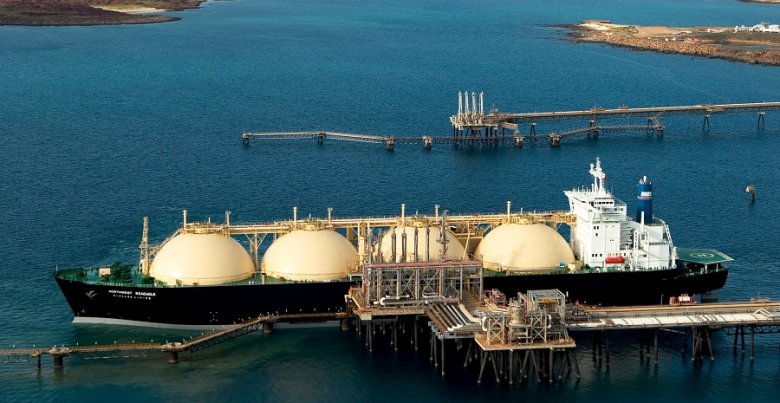
AUSTRALIA'S ECONOMY UP

BLOOMBERG - Australia's economy expanded faster than forecast in the first quarter as exports rebounded, underscoring the central bank's expectation of stronger growth this year.
Gross domestic product advanced 1 percent from the prior quarter, with overseas shipments accounting for half the expansion, the Australian Bureau of Statistics said in Sydney Wednesday. Economists had forecast a 0.9 percent gain. The economy expanded at an annual pace of 3.1 percent, also beating estimates for a 2.8 percent increase.
Australia's economy enjoyed a tailwind from revived exports following disruptions late last year; it's set for a further boost from liquefied natural gas shipments as large projects in the northwest come online. The central bank is acting as an anchor, keeping the benchmark interest rate at a record-low 1.5 percent and with no immediate prospect of a tightening; however, the reliance on overseas sales for growth was noted by economists.
"We doubt that the strength of net exports will be sustained as there was an element of catch-up," said Paul Dales, chief economist for Australia at Capital Economics Ltd. "We fear that still subdued real income growth and the weakening housing market will mean a lot of the softness in consumption lingers."
The Australian dollar rose to 76.54 U.S. cents at 1:03 p.m. in Sydney from 76.34 cents before the release.
Reflecting weak wages growth, the household savings ratio fell to 2.1 percent in the first quarter, the lowest level since the final three months of 2007, from a downwardly revised 2.3 percent as consumers drew on funds to maintain spending. Household spending grew by just 0.3 percent, adding 0.2 percentage point to GDP growth.
Government spending advanced 1.6 percent as authorities in the eastern states embark on major infrastructure projects to cope with expanding populations in their major cities.
"Recent data on the Australian economy have been consistent with the bank's central forecast for GDP growth to pick up, to average a bit above 3 percent in 2018 and 2019," Governor Philip Lowe said Tuesday after standing pat for a 22nd month. "Business conditions are positive and non-mining business investment is increasing. Higher levels of public infrastructure investment are also supporting the economy."
Yet the Reserve Bank of Australia chief's optimism came with his repeated warning that a "continuing source of uncertainty is the outlook for household consumption" amid sluggish wages growth and high debt.
Waiting Game
Traders are pricing in little chance of a rate hike before mid-2019 as the jobless rate remains well shy of the central bank's estimated full employment rate at 5 percent. Only at that level or lower is the economy expected to generate sufficient wage growth to drive inflation back up to the midpoint of the 2-3 percent target range.
Wednesday's report showed private investment in machinery and equipment continued to grow strongly, particularly in industries outside the resource sector. Production of coal, iron ore and liquefied natural gas recorded strong increases.
Australia is the developed world's most China-dependent economy, shipping vast quantitues of iron ore to the mainland for steel production. At the same time, China's burgeoning middle class is boosting demand for Australian education for their children and tourism as their economy -- like Australia's -- transitions toward services.
"The better-than-expected data means we now see the economy expanding by close to 3 percent this year," said Sarah Hunter, head of macroeconomics at BIS Oxford Economics in Sydney. "But with headwinds still coming from consumer spending and a downturn in residential construction activity set to materialize in the second half of the year," growth is likely to slow in 2019.
-----
Earlier:

2018, April, 16, 09:10:00
CHEVRON - AUSTRALIA LNG: $54 BLNREUTERS - The $54 billion Gorgon project came on stream in March 2016 but suffered numerous unplanned shutdowns in its early stages.
|

2018, April, 6, 18:05:00
SANTOS TAKEOVER: $10.4 BLNREUTERS - Australian gas producer Santos Ltd (STO.AX) said on Tuesday it would “engage with” Harbour Energy after receiving a $10.4 billion takeover offer from the U.S. company, its fourth unsolicited bid since August 2017. |

2018, February, 9, 10:55:00
AUSTRALIAN LNG: $111 BLNTWA - The Gorgon and Wheatstone LNG projects are now enjoying cash margins of more than $US30 a barrel at a $US50 price, Chevron says, and production from the $111 billion mega-projects is expected to increase this year. |

2017, December, 18, 12:20:00
AUSTRALIA STOPS COALPLATTS - National Australia Bank announced Thursday it will no longer provide financing for new thermal coal projects.
|

2017, June, 28, 15:00:00
AUSTRALIA - CHINA LNG UPAmong China's LNG suppliers Australia has fared best, with imports rising 42.7 percent in the first five months to 5.39 million tonnes, almost double that of second-placed Qatar at 2.84 million tonnes. |

2017, June, 24, 09:40:00
AUSTRALIAN LNG CONTROLAustralia is set to apply LNG export controls, aimed at securing domestic supply of gas and keeping prices of the fuel in check, from January 1, the government announced earlier this week despite industry warnings about the decision's potential impact on energy investment. |

2016, October, 31, 18:45:00
AUSTRALIAN LNG INFLATION“The rampant cost inflation on Australian projects combined with the collapse in oil prices is damaging for a lot of these projects,” said Neil Beveridge, analyst at Bernstein. LNG prices have been affected by a supply glut and are also linked to oil prices in Asia. |












